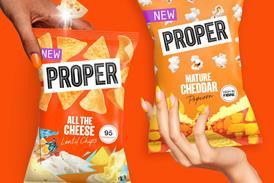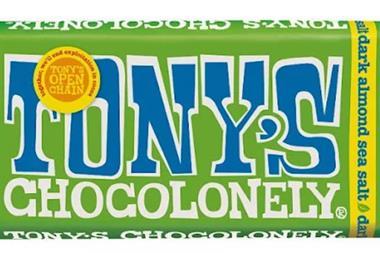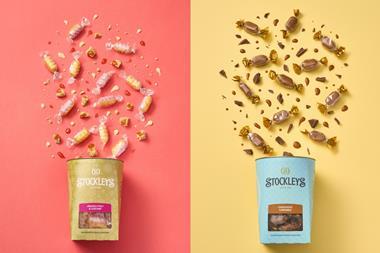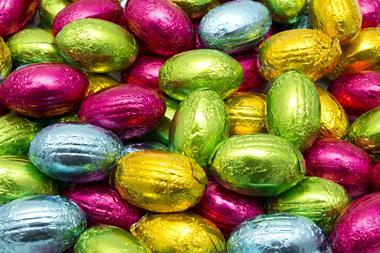Have you ever really paid much attention to those little packs sitting on the corner of your counter? Chewing gum may seem small fry, but it offers some big rewards for retailers who put a little care and attention into their displays.
According to Nielsen data, the total gum category is worth £260m and has grown 4.8% in value over the past year. Not so bad for such little packs, eh?
There’s also potential for further growth, as Mintel believes that just under half of Britons have used gum in the past six months, with four out of 10 users believing that chewing gum helps them avoid snacking as much between meals. One area of possible growth, according to Mintel, is the over-55s, where penetration level is 22%, along with the big selling point of the dental benefits of chewing gum and demand among under-35s for options with more unusual flavours, including flavour-changing gum and gum with energy-boosting ingredients.
Fast facts
- Wrigley’s accounts for 90p in every £1 spent in the gum category
- The total gum category is worth £280m and grew 4.8% in value terms last year
- 50% of shoppers who see gum will buy it
- 62% of gum purchases are unplanned
- The oral care market grew 4% in value in 2012 and 2013
- Sales of mouthwash in the convenience channel grew 8% last year, outperforming the total market.
Sources: Mintel, Nielsen, TNS, IRI Value Convenience, Advantage
Mintel senior food analyst Emma Clifford believes that while the category shrank in terms of volume last year, there’s plenty to be optimistic about. She suggests retailers try linking in with the tooth-friendly message and incorporate gum into a lunch offering. “Lunchtime meal deals could provide a lucrative mechanic to boost usage of chewing gum, positioning these as a guilt-free, tooth-friendly alternative to other confectionery,” she says.
Adam Hogwood, manager of Morrison’s Budgens of Broadstairs in Kent, has been examining how his store’s chewing gum offering could be improved.
“Our gum display was originally above the run of confectionery on the way to the tills and on displays that clip onto shelf tops to give two metres of extra linear space to the category,” he explains. “This run was to the left of anyone in the queue, but missed by lots of people if they were called to a till further to the right.”
To make sure nobody could miss it, Adam decided to go big with his display. “We installed two duplicate displays on the shelving between the three tills, which not only looks strong and bold, but is accessible for longer for customers during their transaction. It was previously promotion-line confectionery, but margin is much healthier on gum than confectionery.”
Putting gum at the till is essential for category success, says Wrigley UK oral care marketing manager Susan Cobbledick. “Gum is one of the most impulsive categories and should be positioned prominently at the till point, in the shopper’s line of vision while cash is being exchanged, to maximise sales,” she says. “It is crucial retailers stock gum prominently at the tillpoint, which is where two-thirds of shoppers expect to find it.”
She recommends having dual siting for the category. “A second display can be anywhere a retailer chooses,” says Cobbledick. “Next to another till or at the end of an aisle is recommended, but retailers can get creative by placing gum, such as sugar free Extra, with other oral care items, or near food to go with signage reminding shoppers to ‘Eat, Drink, Chew’.”
Amit Patel of Belvedere News Food and Wine in Kent finds dual siting works for him. “The compact displays offer big margins, so even if you have minimal space two displays will offer great additional revenue,” he says.
Londis and Budgens retailer Bintesh Amin has worked with his Wrigley UK sales rep to introduce dual siting by adding displays to the health and beauty aisle, which he says has made a big difference to sales in the category.
Claire Powley, brand manager for Perfetti Van Melle’s Mentos, says that retailers should be open to any new products to liven up their display. “Consumers are still on the lookout for innovation,” she says. “Perfetti Van Melle launched the Mentos Gum resealable pouch in 2013 and this was in response to consumer demand for innovation in terms of an upgrade in the type of packaging that their gum was delivered in, citing that with stick packs the product often fell out, there was a perception it went ‘stale’ and the gum pieces themselves were small so they had to eat several at a time.”
She says new packaging types keep the market vibrant. “They provide an added-value option to the regular convenience pack and have added significant sales and visibility for Perfetti Van Melle and Mentos,” says Powley. “A fifth of Mentos Gum consumers are students and 65% are under 35 years old. This statistic is significantly greater for Mentos Gum than its competitors and so it is vital to harness this customer group.”
Oral care routine
Gum isn’t the only category to benefit from changing dental habits; it’s having a positive impact on toothpaste and mouthwash sales, too. Mintel senior personal care analyst Roshida Khanom says the oral care market has seen strong growth over the past two years with 4% value growth in 2012 and 2013, and forecasts for 2018 look bright. “The market is forecast to grow in the best case by 30% from £1bn in 2013, to £1.3bn by 2018, and in the worst case by 13% to £1.1bn,” says Khanom. Mintel predicts the market will grow by 21% to £1.2bn, driven by the mouthwash segment.
Andrew Freestone, commercial director at SHS Sales & Marketing, which distributes Listerine, says changing dental hygiene habits have led to a growth in sales of mouthwash, and that the convenience sector is now seeing the benefit of this.
“With dentists across the UK reporting that attendance levels from patients are down since the start of the economic downturn, the dental health category has become even more important to retailers as consumers seek to prevent expensive problems occurring,” he says. “Also, on average, UK adults spend only 46 seconds brushing their teeth and less than 10% floss regularly, therefore complementary products such as mouthwash can help to overcome problems such as plaque, decay and bad breath that brushing alone cannot resolve.”
He points out that while it is a comparatively small sector in convenience, worth £2m, mouthwash is significantly out-performing the market, showing annual growth of more than 8% in the past 12 months.
Freestone encourages retailers to capitalise on this by stocking big-name brands. “Shoppers are clearly visiting convenience stores and choosing to purchase mouthwash on a more frequent basis, and retailers can make the most of this opportunity by stocking well-known national brands,” he says. “As the leading mouthwash brand, Listerine is worth more than £1.4m annually to the channel and secures an almost 70% share of the category, outperforming the market growing by 12.9% annually.”
He says that retailers can cash in on oral care without too much effort. “For retailers to really maximise the opportunity they are advised to stock a balanced range of toothbrushes, toothpaste and accessories such as mouthwash and merchandise these together on a fixture where shoppers can easily locate them,” says Freestone.
GSK category controller Sean Barry believes that shoppers these days are better educated about oral care, and retailers can benefit from this.
“Consumers are much more engaged with the category, partly because manufacturers are educating them on oral care,” he says. “Shoppers are now moving to more frequent purchasing and searching out best value - making choices based on quality, price and added value, such as additional benefits. By showing customers good value, retailers can drive both instant and repeat purchasing. Based on this data, convenience retailers should focus on offering the right range which meets consumers’ needs, and move away from a ‘one size fits all’ approach.”
For smaller stores without the room for a big display, Barry recommends focusing on oral emergencies. “For the smaller convenience stores we recommend stocking a range of products for the distress shopper, who is purchasing an oral care product for immediate use or for treatment purposes,” he says.
He adds: “We recommend that retailers stock a range of everyday toothpaste and treatment solutions, such as Sensodyne Repair & Protect. The convenience range should also include a variety of toothpastes from the everyday and whitening category, and a small range of toothbrushes and mouthwashes.”
IN BRIEF
Gripping stuff from Poligrip
Poligrip will be on screens until the end of August as part of a £2.7m media campaign. The ‘Poligrip for Partials’ TV campaign is aimed at educating partial denture wearers on how to avoid further tooth loss by raising awareness of the Poligrip for Partials range. The ads will be supported by print and online activity.
Wrigley range extension
Wrigley’s Extra 46-pellet bottle recently celebrated its first year on the market, with more than five million packs sold in the 12 months. To mark the occasion, Wrigley has added a new flavour, Extra White bubblemint.
Mentos teams up with E4
Perfetti Van Melle’s Mentos brand has signed a sponsorship deal with E4 to support a package of TV shows until the end of October. This is Mentos’ biggest sponsorship on British TV and the ‘Fresh Telly on E4’ package features a mix of new and established shows targeting the 16-34 age group.
Navson energy chewing gum
Navson has created an energy chewing gum containing taurine and vitamin B. Packs of Raw have an rrp of 99p and contain 18 pieces of sugar-free gum, which has the same flavour as an energy drink.
Brand watch
Corsodyl has relaunched its toothpaste range with a new ‘Helps stop bleeding gums’ claim. Supported by a £4.7m media campaign, Corsodyl toothpaste now has a medical device classification and is in three variants: original, extra fresh and whitening (rrp £3.99).











![WG-4003[58]](https://d2dyh47stel7w4.cloudfront.net/Pictures/274x183/4/5/1/353451_wg400358_6083.jpg)
















No comments yet